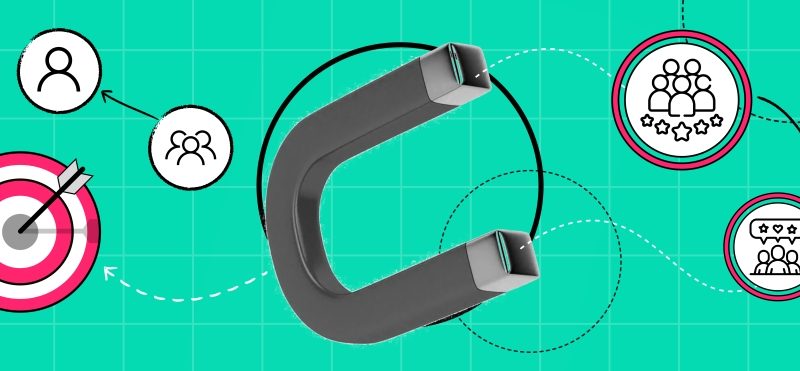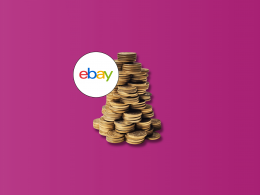Customer retention is at the heart of many business strategies. It dives deep into subjective matters like loyalty or customer experience that seem quite intangible and hard to measure. However, it’s the data-driven approach that captures those metrics in the most effective way, allowing business owners to build solid customer retention strategies.
In this article, we will present the key metrics of customer retention and review data-driven strategies that help in increasing customer retention rates.
Here’s what you’ll learn about KPI reports:
1. Customer retention rate metric and other key elements in assessing customer retention
2. How important is customer retention compared to customer acquisition in my business?
3. Advantages of data-driven approaches in customer retention strategies
4. How to increase customer retention using a data-driven approach
Customer retention rate metric and other key elements in assessing customer retention
Tracking customer retention helps you keep your customers loyal and satisfied. With the right metrics, you can see how well you’re doing and where you can improve to create better customer experiences.
One of the key metrics is the customer retention rate metric (CRR). Let’s explore it deeper.
Customer Retention Rate (CRR)
CRR is the percentage of customers who stay with your company over time. It’s a metric typically used by service and subscription businesses like SaaS, banking, and telecommunication companies.
You can easily calculate CRR by choosing a month or year timeframe. Next, deduct the new number of customers acquired in that timeframe from the total number of customers at the end. Divide that result by the number of customers at the beginning and multiply by 100 to get your CRR.
Other core rates and metrics used in assessing customer retention
Your retention rate presents only one element of your customer rating. So let’s review some other helpful measurements.
Customer Satisfaction Score (CSAT)
Customer Satisfaction Score (CSAT) is another customer experience metric you can calculate. It measures how satisfied or unsatisfied your customers are with your product or service.
The surveys are often based on the Likert scale (for example 1-3, 1-5, or 1-7) and measure the attitudes of your customers toward you.
Using this scale you can calculate your CSAT score by adding up all the scores and dividing it by the number of respondents.
Pro-tip: It’s best to try and get a CSAT score within 15 minutes of an interaction.
Although your CSAT score is a great reporting benchmark, you’ll find the real cause of those scores in the open-ended comments. More on this later.
Net Promoter Score (NPS)
Net Promoter Score (NPS) measures customer satisfaction and customer loyalty. The score determines how likely customers are to recommend your company to a friend or colleague.
You calculate it by taking the percentage of respondents who are promoters and subtracting the percentage of respondents that are detractors.
Now, keep in mind that a score of 0 doesn’t mean you’re doing a lousy job! Instead, analyze your results compared to competitors and focus on improving the score according to customer feedback.
Pro-tip: You can create custom reports that analyze NPS ratings by customer type. Segmentation allows you to understand customer sentiments and how to make the best customer experience.
How important is customer retention compared to customer acquisition in my business?
Most growing companies find themselves balancing customer retention and acquisition efforts. Although many companies focus on customer acquisition, acquiring a new customer costs five to seven times more than retaining one.
In the world of SaaS, for example, it can cost four to five times more to acquire new customers than to retain existing ones.
Reasons for investing in customer retention strategies
- Trust. One of the main reasons it takes more effort to convert a new customer is that customers go for brands they trust. Existing customers are more likely to return to a brand they trust if it provides good customer support, facilitates ease of use, and solves their problems efficiently.
- Cost. Another reason to focus on existing customers is the expense of acquiring new customers. With marketing promotions through Google Adwords, review sites, and partnerships, the costs can add up quickly! In the SaaS industry, where the costs to acquire a new customer are high, a customer needs to remain loyal to your business for one to five years for you to profit from them.
- Resources. It’s more work to turn a lead into a new customer. From having your marketing team identify the leads to your sales team reaching out to each lead, it can be a lengthy process. Even once your product is the right fit for your prospect, follow-up calls are further considerations that eat away at your time and resources.
Advantages of data-driven approaches in customer retention strategies
Data-driven approaches to customer retention strategies offer several advantages over traditional marketing techniques.
- Identifying target audience. You can target specific customers using data-driven methods with personalized messages, offers, and services that suit their preferences. These strategies allow you to reach out to existing customers in ways that are more effective than general marketing campaigns.
- Understanding customer cohorts. Data-driven customer retention strategies provide detailed insights into customer behavior, which allow you to understand how customers interact with your products or services. With this knowledge, you can decide which products or services to offer existing customers or new ones.
- Tracking customer engagement. Use data-driven approaches to track customer engagement levels and see what works best to help retain customers. For example, tracking data usage for your products gives insight into which onboarding stage your customers drop off at the most. Since your onboarding can be a dealbreaker for many customers, it must be seamless and personalized.
How to increase customer retention using a data-driven approach
A data-driven approach helps identify what keeps your customers returning. But how exactly can you improve customer retention using a data-driven approach?
Reduce your product offering
It may sound counterintuitive, but you may think offering your products as much as possible is best. However, today’s customer is bombarded with messages and products everywhere they go, which becomes off-putting.
This is where “less is more” is the right approach. So use data to carefully look at what your customer wants.
By offering products more thoughtfully and creating targeting offers, you stand out as a business that cares about your customer and retains them.
Get personal
Whether you offer small business software or retail management systems, one of the most effective ways to retain customers is to get personal.
Improving personalization means getting to know your customers better and developing your offering to include things your customer needs.
It also means connecting on a human level. Use data to study your customers’ interests and then build on this by expressing your shared values or interests.
How personalization can improve retention
It’s all about building that emotional connection. For example, suppose your customer data shows they don’t know how to customize your software.
In that case, you know it’s time to mention the 24/7 support you offer to guide customers. This way, your customer feels special and customer loyalty improves.
Leverage AI and machine learning
Your customer retention rate improves drastically if you pay special attention to your customers throughout their lifecycle. But as your business grows and you have more than a few customers, using traditional analytics tools to dig up insights becomes a slow process.
That’s where AI-learning tools with machine learning come in. These technologies sift through complex data to give essential insights that improve customer retention.
Machine learning uses algorithms to make predictions to understand what the customer wants.
Using AI is a great way to retain customers by having a deeper understanding of their preferences. Plus, you can find out the reasons for customers not returning to your business and then deal with the problem to prevent the issue.
How are subjective measures like customer support or customer loyalty used in a data-driven retention strategy?
Subjective measures like the quality of customer support or customer loyalty may seem hard to capture. Putting a number to responses such as: ‘I didn’t like the whole purchasing experience’ might be difficult, but with the right approach, you can turn such subjective descriptions into valuable data.
Moreover, by incorporating subjective metrics into your customer retention strategy, you can better understand your customers’ needs, wants, and motivations.
How to improve customer support
Customer support is one of the most important areas for data-driven customer retention strategies. Let’s explore different strategies that increase customer support.
Provide a great customer experience
When customers have a positive support experience, they’re more likely to remain loyal customers.
Ensuring your customer service team is well-trained on your product or services can go a long way in creating a great customer experience.
Additionally, providing timely, efficient responses to customer queries shows that you value their time and opinions, which leads to customer loyalty.
Empower your customers
Empowering customers with resources such as tutorials or FAQs to find answers without waiting for your help shows them that you are invested in their success.
It gives customers confidence in your brand and keeps them coming back for more.
Collect customer feedback
A key factor involving customer support is collecting customer feedback. Asking customers for their thoughts on specific products, services, and support experiences helps you understand what they’re looking for.
This way, you can adjust your offerings and improve customer support accordingly.
How to enhance loyalty to retain customers
Subjective measures like customer loyalty are essential in a data-driven customer retention strategy.
Customer loyalty refers to the emotional relationship that a customer has with your products and brand. It tells you how likely an individual is to remain loyal to your business and can be determined by factors such as:
- Purchase frequency.
- Feedback surveys.
- Customer satisfaction ratings.
Customer loyalty goes over and above customer retention, as it manifests not only in purchasing behavior but in a strong relationship with your brand.
Measuring customer loyalty provides valuable insight into the overall health of your business – it uncovers patterns and preferences that you might not be able to find through traditional analytics:
- Increase your understanding. Loyalty measures help you understand what your customers love the most about your brand, products, and customer experience. This gives you plenty of information for building new marketing strategies, improving customer support, and even influencing the products and services you offer.
- Targeted campaigns. Understanding how loyal each customer cohort is, helps to create targeted promotional campaigns, discounts, and personalized experiences that retain customers.
- Decrease churn. Analyze customer loyalty to uncover why certain customers may be more likely to churn. Next, target those key issues to ensure maximum customer satisfaction and engagement.
Closing thoughts
Customer retention metrics are great tools for understanding your current customer base and creating relevant strategies. Improving customer retention is a reliable and cost-effective way to increase your business profits.
With the help of data-driven approaches, you can build a solid base of information that provides actionable insights and a direction for your marketing strategies.

.png)




